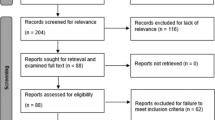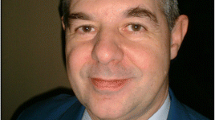Abstract
Purpose
New evidence highlights the significance of 3D in-brace correction for Adolescent Idiopathic Scoliosis (AIS) patients. This study explores how axial parameters relate to treatment failure in braced AIS patients.
Methods
AIS patients (Sanders 1–5) undergoing Rigo-Chêneau bracing at a single institution were included. Axial vertebral rotation (AVR) was determined by utilizing pre-brace and in-brace 3D reconstructions from EOS® radiographs. The primary outcome was treatment failure: surgery or coronal curve progression > 5°. Minimum follow-up was two years.
Results
75 patients (81% female) were included. Mean age at bracing initiation was 12.8 ± 1.3 years and patients had a pre-brace major curve of 31.0° ± 6.5°. 25 patients (76% female) experienced curve progression > 5°, and 18/25 required surgical intervention. The treatment failure group had larger in-brace AVR than the success group (5.8° ± 4.1° vs. 9.9° ± 7.6°, p = 0.003), but also larger initial coronal curve measures. In-brace AVR did not appear to be associated with treatment failure after adjusting for the pre-brace major curve (Hazard Ratio (HR):0.99, 95% Confidence Interval (CI):0.94–1.05, p = 0.833). Adjusting for pre-brace major curve, patients with AVR improvement with bracing had an 85% risk reduction in treatment failure versus those without (HR:0.15, 95% CI:0.02–1.13, p = 0.066). At the final follow-up, 42/50 (84%) patients without progression had Sanders ≥ 7.
Conclusions
While in-brace rotation was not an independent predictor of curve progression (due to its correlation with curve magnitude), improved AVR with bracing was a significant predictor of curve progression. This study is the first step toward investigating the interplay between 3D parameters, skeletal maturity, compliance, and brace efficacy, allowing a future prospective multicenter study.
Level of evidence
Retrospective study; Level III.




Similar content being viewed by others
Data availability
The data that support the findings of this study are not openly available due to reasons of sensitivity, confidentiality, and IRB compliance.
References
Matsumoto H, Warren S, Simhon ME et al (2020) It is not just about the frontal plane: sagittal parameters impact curve progression in AIS patients undergoing brace treatment. Spine Deform 8(5):921–929. https://doi.org/10.1007/s43390-020-00122-4
Stokes IA (1994) Three-dimensional terminology of spinal deformity. A report presented to the scoliosis research society by the scoliosis research society working group on 3-D terminology of spinal deformity. Spine 19(2):236–248
Rigo M, Jelačić M (2017) Brace technology thematic series: the 3D Rigo Chêneau-type brace. Scoliosis Spinal Dis 12(1):10. https://doi.org/10.1186/s13013-017-0114-2
Zaborowska-Sapeta K, Kowalski IM, Kotwicki T et al (2011) Effectiveness of Cheneau brace treatment for idiopathic scoliosis: prospective study in 79 patients followed to skeletal maturity. Scoliosis 6(1):2
Rigo M, Quera-Salvá G, Puigdevall NMM (2002) Retrospective results in immature idiopathic scoliotic patients treated with a Chêneau brace. Stud Health Tech Inform 88:241–245
Ovadia D, Eylon S, Mashiah A et al (2012) Factors associated with the success of the rigo system Chêneau brace in treating mild to moderate adolescent idiopathic scoliosis. J Child Orthop 6(4):327–331. https://doi.org/10.1007/s11832-012-0429-8
Minsk MK, Venuti KD, Daumit GL et al (2017) Effectiveness of the Rigo Chêneau versus Boston-style orthoses for adolescent idiopathic scoliosis: a retrospective study. Scoliosis Spinal Dis 12(1):7. https://doi.org/10.1186/s13013-017-0117-z
Roye BD, Simhon ME, Matsumoto H et al (2020) Establishing consensus on the best practice guidelines for the use of bracing in adolescent idiopathic scoliosis. Spine Deform 8(4):597–604. https://doi.org/10.1007/s43390-020-00060-1
Drerup B (1984) Principles of measurement of vertebral rotation from frontal projections of the pedicles. J Biomech 17(12):923–935
Lam GC, Hill DL, Le LH et al (2008) Vertebral rotation measurement: a summary and comparison of common radiographic and CT methods. Scoliosis 3:16. https://doi.org/10.1186/1748-7161-3-16
Nash CL, Moe JH (1969) A study of vertebral rotation. J Bone Joint Surg Am 51(2):223–229
Stokes IA, Bigalow LC, Moreland MS (1986) Measurement of axial rotation of vertebrae in scoliosis. Spine 11(3):213–218
Chi WM, Cheng CW, Yeh WC et al (2006) Vertebral axial rotation measurement method. Comput Methods Programs Biomed 81(1):8–17. https://doi.org/10.1016/j.cmpb.2005.10.004
Birchall D, Hughes DG, Hindle J et al (1997) Measurement of vertebral rotation in adolescent idiopathic scoliosis using three-dimensional magnetic resonance imaging. Spine 22(20):2403–2407. https://doi.org/10.1097/00007632-199710150-00016
Aaro S, Dahlborn M, Svensson L (1978) Estimation of vertebral rotation in structural scoliosis by computer tomography. Acta Radiol Diagn 19(6):990–992. https://doi.org/10.1177/028418517801900614
Ho EK, Upadhyay SS, Chan FL et al (1993) New methods of measuring vertebral rotation from computed tomographic scans . an intraobserver and interobserver study on girls with scoliosis. Spine. https://doi.org/10.1097/00007632-199307000-00008
Aaro S, Dahlborn M (1981) Estimation of vertebral rotation and the spinal and rib cage deformity in scoliosis by computer tomography. Spine 6(5):460–467. https://doi.org/10.1097/00007632-198109000-00007
Deschênes S, Charron G, Beaudoin G et al (2010) Diagnostic imaging of spinal deformities: reducing patients radiation dose with a new slot-scanning X-ray imager. Spine 35(9):989–994. https://doi.org/10.1097/BRS.0b013e3181bdcaa4
Vidal C, Ilharreborde B, Azoulay R et al (2013) Reliability of cervical lordosis and global sagittal spinal balance measurements in adolescent idiopathic scoliosis. Eur Spine J 22(6):1362–1367. https://doi.org/10.1007/s00586-013-2752-2
Al-Aubaidi Z, Lebel D, Oudjhane K et al (2013) Three-dimensional imaging of the spine using the EOS system: is it reliable? a comparative study using computed tomography imaging. J Pediatr Orthop B 22(5):409–412. https://doi.org/10.1097/BPB.0b013e328361ae5b
Melhem E, Assi A, El Rachkidi R et al (2016) EOS(®) biplanar X-ray imaging: concept, developments, benefits, and limitations. J Child Orthopaed 10(1):1–14. https://doi.org/10.1007/s11832-016-0713-0
Courvoisier A, Drevelle X, Dubousset J et al (2013) Transverse plane 3D analysis of mild scoliosis. Eur Spine J 22(11):2427–2432. https://doi.org/10.1007/s00586-013-2862-x
Nault ML, Mac-Thiong JM, Roy-Beaudry M et al (2014) Three-dimensional spinal morphology can differentiate between progressive and nonprogressive patients with adolescent idiopathic scoliosis at the initial presentation. Spine 39(10):E601–E606. https://doi.org/10.1097/BRS.0000000000000284
Behensky H, Cole AA, Freeman BJC et al (2007) Fixed lumbar apical vertebral rotation predicts spinal decompensation in Lenke type 3C adolescent idiopathic scoliosis after selective posterior thoracic correction and fusion. Eur Spine J 16(10):1570–1578. https://doi.org/10.1007/s00586-007-0397-8
Aronsson DD, Stokes IA, Ronchetti PJ et al (1996) Surgical correction of vertebral axial rotation in adolescent idiopathic scoliosis: prediction by lateral bending films. J Spinal Disord 9(3):214–219
Stokes IAF (1989) Axial rotation component of thoracic scoliosis. J Orthop Res 7(5):702–708. https://doi.org/10.1002/jor.1100070511
D’Andrea LP, Betz RR, Lenke LG et al (2000) Do radiographic parameters correlate with clinical outcomes in adolescent idiopathic scoliosis? Spine. https://doi.org/10.1097/00007632-200007150-00010
Rinella A, Lenke L, Peelle M et al (2004) Comparison of SRS questionnaire results submitted by both parents and patients in the operative treatment of idiopathic scoliosis. Spine 29(3):303–310
Asher M, Lai SM, Burton D et al (2004) The influence of spine and trunk deformity on preoperative idiopathic scoliosis patients’ health-related quality of life questionnaire responses. Spine 29(8):861–868
Gille O, Champain N, Benchikh-El-Fegoun A et al (2007) Reliability of 3D reconstruction of the spine of mild scoliotic patients. Spine 32(5):568–573. https://doi.org/10.1097/01.brs.0000256866.25747.b3
Weinstein SL, Dolan LA, Wright JG et al (2013) Effects of bracing in adolescents with idiopathic scoliosis. N Engl J Med 369(16):1512–1521. https://doi.org/10.1056/NEJMoa1307337
Coillard C, Circo AB, Rivard CH (2014) A prospective randomized controlled trial of the natural history of idiopathic scoliosis versus treatment with the spinecor brace sosort award 2011 winner. Eur J Phy Rehabil Med 50(5):479–487
Wiemann JM, Shah S, a, Price CT. (2014) Nighttime bracing versus observation for early adolescent idiopathic scoliosis. J Pediatr Orthope 34(6):603–606. https://doi.org/10.1097/BPO.0000000000000221
Holt JB, Dolan LA, Weinstein SL (2017) Outcomes of primary posterior spinal fusion for scoliosis in spinal muscular atrophy. J Pediatr Orthop. https://doi.org/10.1097/BPO.0000000000001049
Nachemson A, Peterson L (1995) Effectiveness of treatment with a brace in girls who have adolescent idiopathic scoliosis. A prospective, controlled study based on data from the brace study of the scoliosis research society. J Bone Jt Surg Am Vol 77:815–822
Peterson LE, Nachemson AL (1995) Prediction of progression of the curve in girls who have adolescent idiopathic scoliosis of moderate severity Logistic regression analysis based on data from. The brace study of the scoliosis research society. J Bone Jt Surg Am Vol 77(6):823–827
Goldberg CJ, Dowling FE, Hall J et al (1993) A statistical comparison between natural history of idiopathic scoliosis and brace treatment in skeletally immature adolescent girls. Spine 18(7):902–908
Deacon P, Flood BM, Dickson RA (1984) Idiopathic scoliosis in three dimensions. A radiographic and morphometric analysis. J Bone Joint Surg Br. https://doi.org/10.1302/0301-620X.66B4.6746683
Stokes IA, Bigalow LC, Moreland MS (1987) Three-dimensional spinal curvature in idiopathic scoliosis. J Orthop Res 5(1):102–113
Villemure I, Aubin CE, Dansereau J et al (1999) Correlation study between spinal curvatures and vertebral and disk deformities in idiopathic scoliosis. Ann Chir 53(8):798–807
Upadhyay SS, Nelson IW, Ho EK et al (1995) New prognostic factors to predict the final outcome of brace treatment in adolescent idiopathic scoliosis. Spine 20(5):537–545
Yamane K, Takigawa T, Tanaka M et al (2016) Impact of rotation correction after brace treatment on prognosis in adolescent idiopathic scoliosis. Asian Spine J 10(5):893–900. https://doi.org/10.4184/asj.2016.10.5.893
Boyer L, Shen J, Parent S et al (2018) Accuracy and precision of seven radiography-based measurement methods of vertebral axial rotation in adolescent idiopathic scoliosis. Spine Deform 6(4):351–357. https://doi.org/10.1016/j.jspd.2017.12.004
Funding
This work was conducted with the support of a grant from the Scoliosis Research Society used to fund imaging analysis provided by EOS® imaging (Paris, France).
Author information
Authors and Affiliations
Contributions
MWF, CCR, MSM, RRG, MES, HM, GFM, ASB, BDR, MGV—Made substantial contributions to the conception or design of the work; or the acquisition, analysis, or interpretation of data, or the creation of new software used in the work. Drafted the work or revised it critically for important intellectual content. Approved of the version to be published. Agree to be accountable for all aspects of the work in ensuring that questions related to the accuracy or integrity of any part of the work are appropriately investigated and resolved.
Corresponding author
Ethics declarations
Conflict of interest
MWF has no conflicts of interest to disclose. CCR has no conflicts of interest to disclose. MSM has no conflicts of interest to disclose. RRG has no conflicts of interest to disclose. MES has no conflicts of interest to disclose. HM has no conflicts of interest to disclose. GFM has no conflicts of interest to disclose. AZB has no conflicts of interest to disclose. BDR has received grants from the Pediatric Orthopaedic Society of North America and Orthopedic Science Research Foundation. MGV has received grants from the Pediatric Orthopaedic Society of North America, Orthopedic Science Research Foundation, Pediatric Spine Foundation, and Setting Scoliosis Straight Foundation and royalties from Biomet. He is a paid consultant for Stryker, Biomet, and NuVasive. MGV is on the Board of Directors of Pediatric Spine Foundation, Pediatric Spine Study Group, and C4K. He is former president of Pediatric Orthopaedic Society of North America and is a Board Member, and Chair Emeritus of the International Pediatric Orthopaedic Symposium.
Ethics approval
This study was approved by the Columbia University Institutional Review Board (Protocol AAAS5931) and was performed in accordance with the ethical standards of the 1964 Declaration of Helsinki and its later amendments or comparable ethical standards.
Informed consent
This study qualifies for a waiver of consent because it is a retrospective chart review. It does not require patient participation, as all data has already been collected during routine clinical care. There is no potential to adversely affect the rights or welfare of subjects since this is a chart review.
Additional information
Publisher's Note
Springer Nature remains neutral with regard to jurisdictional claims in published maps and institutional affiliations.
Rights and permissions
Springer Nature or its licensor (e.g. a society or other partner) holds exclusive rights to this article under a publishing agreement with the author(s) or other rightsholder(s); author self-archiving of the accepted manuscript version of this article is solely governed by the terms of such publishing agreement and applicable law.
About this article
Cite this article
Fields, M.W., Rymond, C.C., Malka, M.S. et al. Improvement in axial rotation with bracing reduces the risk of curve progression in patients with adolescent idiopathic scoliosis. Spine Deform (2024). https://doi.org/10.1007/s43390-024-00888-x
Received:
Accepted:
Published:
DOI: https://doi.org/10.1007/s43390-024-00888-x




